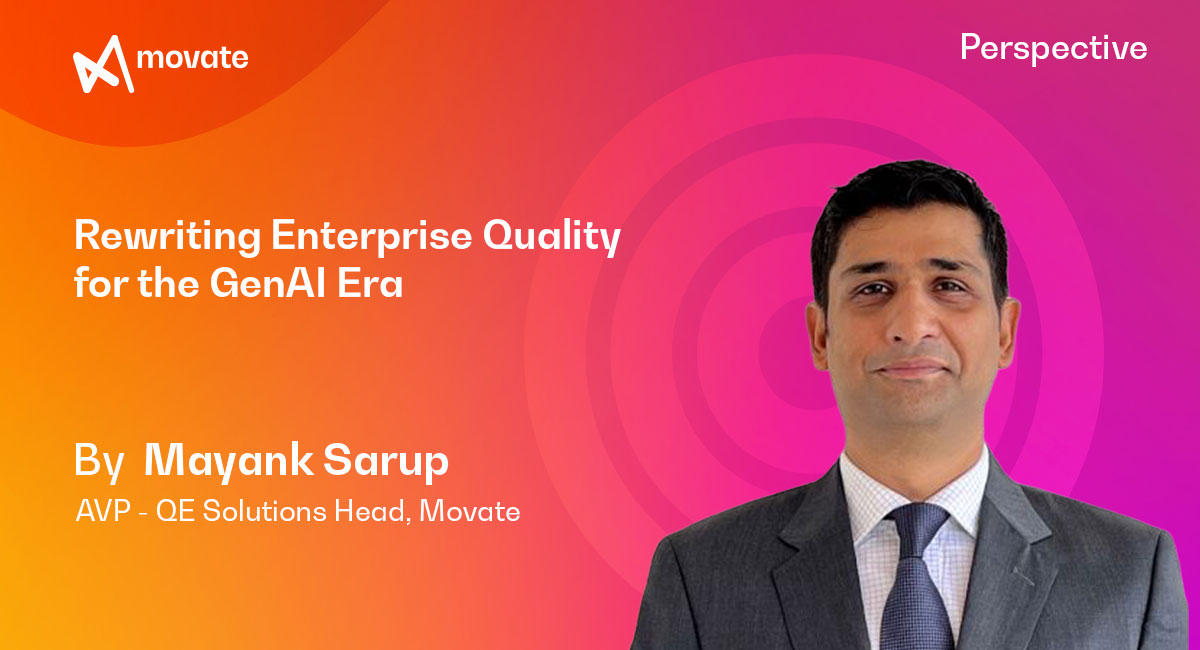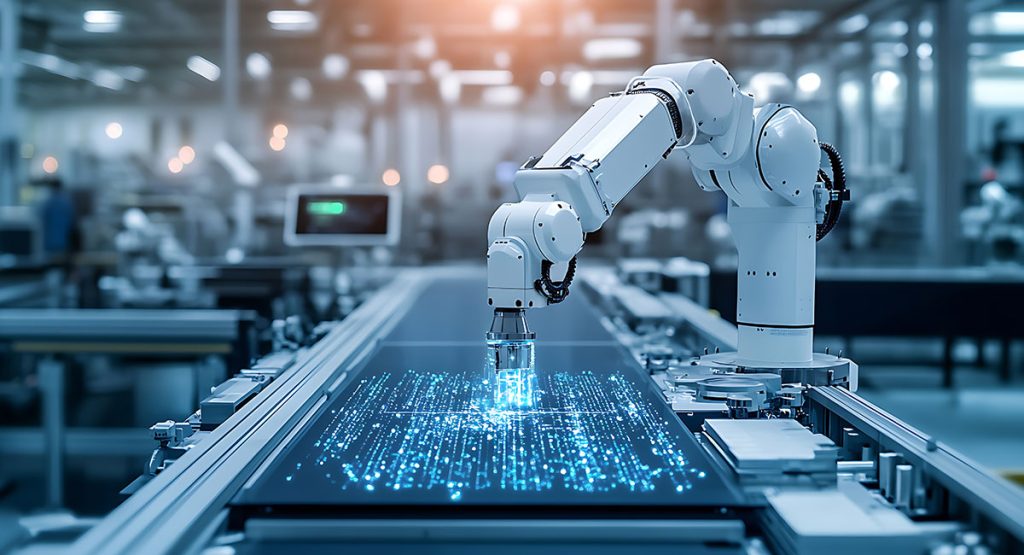
The conversation around quality in the enterprise has changed, again.
We’ve long moved past the “shift left” revolution. Today’s CIOs are facing an even bigger challenge: how to engineer continuous trust in a world where code ships daily, systems are modular, and AI is part of the software supply chain. In this complexity, Generative AI (GenAI) is not just accelerating software development, it’s redefining how quality is assured, validated, and governed.
The rise of autonomous quality engineering (QE) is not a trend; it’s a strategic response to systemic pressure to reduce cycle times, improve coverage, contain costs, and ensure compliance, all at once.
Autonomous QE: The New Baseline for Digital Resilience
Today’s GenAI-powered QE models are not simply enhancing traditional QA, they are re-architecting quality as an intelligent, adaptive layer embedded across the delivery lifecycle.
Leading enterprises are adopting AI-led systems that:
- Auto-repair broken tests through self-healing mechanisms, minimizing test flakiness and manual rework
- Predict defect hotspots based on historical failures, code change patterns, and production logs
- Continuously validate user journeys and business logic even as architecture evolves
- Adapt testing in real-time to changing regulatory rules, compliance frameworks, and data conditions
Automation Platforms like Movate QENxt, TestSigma, Tosca, Browserstack and Lambdatest are already introducing native GenAI capabilities to support these use cases. More importantly, CIOs across industries are aligning their QA/QE roadmaps with GenAI investments, not as a tool refresh but as a shift in how software quality is operationalized at scale.
What Industry CIOs Are Prioritizing
According to a 2025 mid-year Gartner survey, trust, traceability, and business-aligned ROI are now the top three requirements when deploying GenAI in quality pipelines. CIOs across sectors emphasized:
- The need to reduce the “QA drag” in Agile/DevOps cycles through autonomous validation layers
- The value of predictive QE in avoiding business outages, especially in customer-facing apps
- The growing role of exploratory, scenario-based GenAI agents to test critical edge cases faster than humans can script
GenAI adoption in quality engineering is accelerating, with the 2024 World Quality Report noting that nearly 70% of enterprises are using or planning to use i“CIOs across industries . Early adopters are already seeing faster test cycles, improved coverage, and stronger defect detection, but most are still in early deployment rather than long-term maturity. This signals that enterprise quality strategies must be reimagined now to capture the full advantage of the GenAI era.

The Rise of Autonomous QE in the GenAI Era
The shift from QA to QE has long been underway, but GenAI is accelerating that journey by enabling systems that are self-aware, self-healing, and self-improving. These aren’t buzzwords, they reflect real engineering gains being realized in enterprise ecosystems today.
Take the case of self-healing automation platforms. Traditional test automation is brittle, where small changes in UI, data models, or APIs can break test scripts, causing delays, reducing capacity and adding unplanned maintenance. GenAI solves this by auto analyzing test failures, identifying broken selectors, and auto-correcting scripts in real time. Movate has developed and embedding this capability directly into their QENxt platform, enabling QA teams to shift from reactive maintenance to proactive resilience.
In parallel, intelligent defect prediction & impact analysis is turning QA into a preemptive risk mitigation function. By analyzing historical test logs, code commits, user stories, production telemetry, and change impact patterns, GenAI models can predict impact areas and where defects are most likely to occur. This is no longer theoretical, enterprises across sectors are already leveraging GenAI-powered digital twins and predictive models to pinpoint anomalies and trigger early interventions in complex systems.
Equally transformative is autonomous validation across complex systems. GenAI can generate risk-aware, domain-specific test cases and synthetic data sets tailored to regulatory and compliance requirements. These systems dynamically adapt to application changes, enabling continuous testing across hybrid, multi-cloud, and microservices architectures. More advanced GenAI agents now simulate real-world user behavior based on production usage patterns, improving coverage for edge cases that traditional testing and automation routinely misses.
Enterprise Impact: Beyond Efficiency to Strategic Enablement
The impact of these advancements goes beyond cycle-time reduction. Leading organizations are leveraging autonomous QE to:
- Achieve up to 40% reduction in manual testing effort through AI-led test generation and maintenance
- Improve release confidence and speed across multi-release Agile and DevOps environments
- Enhance compliance alignment and defect detection in regulated sectors like BFSI, healthcare, and telecom
- Strengthen resilience, with adaptive quality frameworks responding to live production changes

Balancing Innovation with Risk: The QE Governance Imperative
Despite clear upside, GenAI’s role in QE must be approached with discipline. Gartner warns that as costs rise, ranging from $5M to $20M per enterprise project, success will hinge on careful governance and value alignment.
Autonomous QE must be built on:
- Reliable data pipelines that feed AI with high-quality, context-rich inputs
- Transparent decision frameworks, especially in regulated or customer-impacting domains
- Human-in-the-loop models where AI augments do not replace, rather enhance output through expert oversight
- Outcome-based metrics that go beyond defect count to measure stability, coverage, and time-to-value
Organizations that responsibly embed GenAI into QE as a tool and strategic capability will be better equipped to scale transformation without sacrificing control.
Conclusion
As GenAI reshapes enterprise architecture and decision-making, the role of quality engineering must be reimagined not as a gatekeeper, but as a continuous source of intelligence, trust, and adaptability. In this new approach, Autonomous QE is the connective tissue between speed and stability, innovation and control.
CIOs and engineering leaders who treat quality as a dynamic, AI-enabled discipline will unlock faster releases, deeper insights, and greater confidence across the software lifecycle. This is not merely a refinement of traditional QA; it’s a strategic reset for enterprises seeking to move at the speed of GenAI without sacrificing what matters most: trust, resilience, and user experience.
In a world where “shifting left” is no longer enough, Autonomous QE powered by GenAI is how leading enterprises are engineering continuous trust, speed, and adaptability at scale.
About the author

Mayank Sarup is a senior Quality Engineering leader with over two decades of experience driving enterprise-wide QE transformations. At Movate, he spearheads the AI-driven QE platform, integrating GenAI, Automation, and Predictive Analytics for data-driven decisioning. His work focuses on redefining how assurance is delivered in the age of intelligent assurance and continuous quality.
